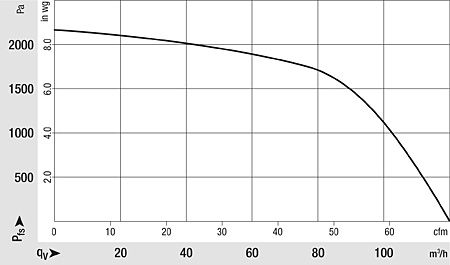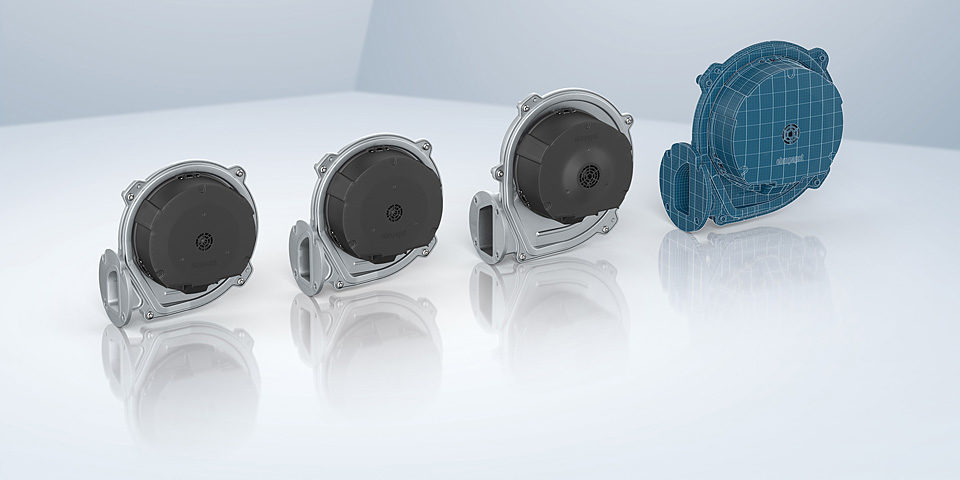Specifications, like those defined in the Climate Action Plan 2050, are set down in law with a view to protecting the environment. The overall aim is to reduce carbon dioxide emissions by 80 to 95% as compared to the 1990 level. Building heating systems in particular offer great potential for savings. Simply by making consistent use of condensing technology and significantly increasing the rate at which old heating systems are replaced (6% p. a.), it would be possible to lower the CO2 emissions generated by total power consumption in Germany by around 15% by the year 2030.
A practicable approach to heating system renewal
TIn theory, house owners can save a lot of money and fuel by using the latest technology in their heating systems. In practice, however, that is associated with a great deal of expense and sometimes a lot of construction work. This naturally gives rise to a considerable modernization backlog, and regrettably plenty of boilers more than 30 years old are still to be found. What is to be done? Gradual modernization, starting with the boiler, then the windows and later on insulation of the outside walls or attic conversion etc., is a solution which reduces the financial burden and is less nerve-wracking in the short term. It does however presuppose that the new heat source will be able to cope with the different requirements and always operate efficiently.

Picture 1: By way of example, the pressure/air flow graph of the VG 100 shows the broad performance range of the new gas blowers. (Source: ebm-papst)
Regional building regulations often additionally demand the use of renewable energies in the event of extensive modernization. The problem: if base load heat pumps are fitted, these should be designed for a fixed heat output or a fixed heating temperature to obtain efficient operation. If conditions are altered by later renovation work, such as further insulation measures or fitting new radiators, the heat pump will often operate less efficiently, and what was intended as a “saving” will actually make heating more expensive.
Such problems can be avoided by using a heating system with scalable output (picture 1). Operation of the heating system in conjunction with thermal solar collectors is associated with a fluctuating heat demand, to which the heating system has to flexibly react. Ideally, a heating system should be able to satisfy all these requirements without any loss of efficiency. What form could such an economical and ecological solution take?
Condensing technology with gas blower
Condensing technology is an extremely efficient method of heating. Gas condensing boilers are not just a compact and inexpensive solution, they also offer a scalable heat output. Thanks to the low heating water temperatures permitted by the design, the condensing units are also ideal for combination with other heating concepts such as solar heating and heat pumps. Condensing technology makes use not only of the “normal” heat of the energy contained in the fuel (gas), but also of much of the so-called latent heat of the water vapor contained in the exhaust gas from the combustion process.
Its high hydrogen content makes natural gas particularly suitable for this. Given an energy content of around 10 kWh/m³ natural gas, this yields up to 3 kW extra heat output with a natural gas consumption of 2 m³/h – corresponding to a conventional heat output of roughly 20 kW. This is obtained solely through the lowering of the exhaust gas temperature from the standard 150°C to e.g. 40°C and hence 80% condensation of the water vapor contained in it (around 1.5 l per m³ gas). As compared to conventional systems with an exhaust gas temperature of 150°C, this represents an up to 15% increase in efficiency.

Picture 2: The new RadiMix product range reduces the existing number of gas blower types between 0.5 and 150 kW by a good 20%. (Source: ebm-papst)
This offers many advantages, as less fuel is required and a gas condensing boiler is far more compact than a conventional boiler. The low temperatures also make exhaust gas ducting less expensive. What’s more, modern condensing boilers are electronically controlled and flexibly adapt the burner and pump output to the heating output currently required. This reduces the switching rate of the device and the cooling losses in the intervals between the operating phases.
But here again the efficiency levels given only ever reflect a momentary status and only relate to the current ratio between input and output power. This is however not sufficient for the assessment of a condensing boiler, as it does not take the standby heat loss into account. In other words, it only calculates the losses occurring with the burner in operation — and, even then, only at one operating point. A shift in the operating points as a result of different usage or extensive modernization etc. will render the entire cost-benefit analysis invalid. An answer to this problem is a scalable burner output which can be achieved with the broad modulation ranges of the gas blowers used.
These adapt ideally to the instantaneous heat demand without any loss of efficiency. The old rule of thumb, that 50% of the maximum heat output as per DIN 4701 is often sufficient to cover 90% of the heating energy demand and that many heating boilers are over-dimensioned with correspondingly high standby losses to cover the remaining 10%, thus no longer applies.
Modern gas blower platform for outputs from 0.5 to 150 kW
With their broad modulation range, the new RadiMix gas blowers from ebm-papst Landshut reduce precisely these standby losses. This means that the blowers can adapt the gas/air mixture quantity in a broad range up to 1:15 whilst maintaining a constant quality for optimum, low-emission combustion. At the same time, the new RadiMix product range reduces the number of different gas blower types by a good 20% (picture 2).
Boiler manufacturers now require just three versions to cover output levels from 0.5 to 80 kW, and a fourth blower will be coming onto the market next year to fill the gap up to 150 kW. The smallest gas blower, the VG 71, provides a heat output of up to 35 kW whereas the figure for the larger version, the VG 100, is up to 50 kW. The VG 108 with a heat output of up to 80 kW is ideal for large heating systems in apartment blocks, for example.
Alongside the variable heat output, installation has also become more versatile, e.g. thanks to 360° motor positioning and hence the possibility of connector positioning to suit customer requirements. In future, the gas blowers will also be available with venturi and gas valve as a perfectly coordinated complete system for particularly low-emission combustion (picture 3).

Picture 3: A lot of platform components can be combined for different output classes. (Source: ebm-papst)
Each blower features a new motor concept, specially adapted aerodynamics and isolation from vibration developed specially for the blowers to guard against structure-borne noise. The design of the motors with maintenance-free ball bearings is adapted to the higher air mixture conveying capacity required, for example through the use of a magnet material with far greater magnetic remanence and a completely new motor topology. Depending on the version, this can enhance drive efficiency by a good 5%.
Alongside a decrease in air-borne noise, it also proved possible to significantly reduce vibration (structure-borne noise) through simulation and testing with state-of-the-art development tools. As compared to the predecessor model, the operating noise dropped by more than 3 dB(A) depending on the blower type. The electronics have also been completely re-designed and now feature optional BUS interfaces for easy integration into digital systems. Operating states such as output, service status, temperatures, operating voltage and other data processed in the blower control systems can be called up via planned BUS interfaces (ebm-papst is pursuing the approach of working with the LIN-Bus protocol).
This not only makes incorporation of the blower into the boiler control system easy to implement, it will also permit preventive maintenance or remote diagnosis in the near future. Thanks to the use of a cooling concept already successfully employed in other products, the electronics are also located in the cooling airflow, thus making for greater reliability and a longer service life. A robust motor protective cap permanently attached to the housing encloses all the drive components.

I really enjoyed your article. I have been in the heating industry 41 years and always try to do the best for my customers. I am curious are some type of heat loss required in Europe? Generally there is not in the USA.
Most boiler installed here are normally 70% – 100% oversize due to most techs sizing on the size of the old cast iron boiler and some will increase a size from there due to modulation. How does this affect the efficiency as most of the boilers even a 10:1 turndown will cycle off on setpoint temperature due to boiler oversizing?
Thanks
Dear Ron,
Thanks for your comment. This is what our experts have to say: “We cannot give you a clear answer to your question. But it´s fact, that with a boiler which is not perfectly adapted to the overall requested heat requirement of a building, will have a lower efficiency due to on/off warming up and cooling down effects of the appliance.”
Best regards, you mag-team